The New York Times reports that Wisconsin’s dairy industry is in trouble:
Wisconsin is known as “America’s Dairyland,” but the milk makers who gave the state its moniker are vanishing, falling prey to a variety of impediments, including President Trump and his global trade war. Over the past two years, nearly 1,200 of the state’s dairy farms have stopped milking cows and so far this year, another 212 have disappeared, with many shifting production to beef or vegetables.
….The fate of Wisconsin’s farmers is a high-stakes political predicament for Mr. Trump, who narrowly won the pivotal swing state in 2016 and hopes to keep it red in 2020….Mr. Trump’s trade approach has pushed many of Wisconsin’s already struggling dairy farmers to the edge. Milk prices have fallen nearly 40 percent over the past five years….That has coincided with Mr. Trump’s sweeping tariffs on foreign steel and aluminum, which were intended to help American manufacturers but have set off retaliatory tariffs from Mexico, Canada, Europe and China on American dairy products. Most painful for Wisconsin’s dairy farmers has been a 25 percent tariff that Mexico placed on American cheese, which is made with a significant volume of the state’s milk production.
Dean Baker complains that the story never mentions the rise in the value of the dollar over the past five years, and that’s fair enough. But I have a different complaint: the story is innumerate. Let’s take a look at national figures for dairy production and exports. Here’s production of milk:
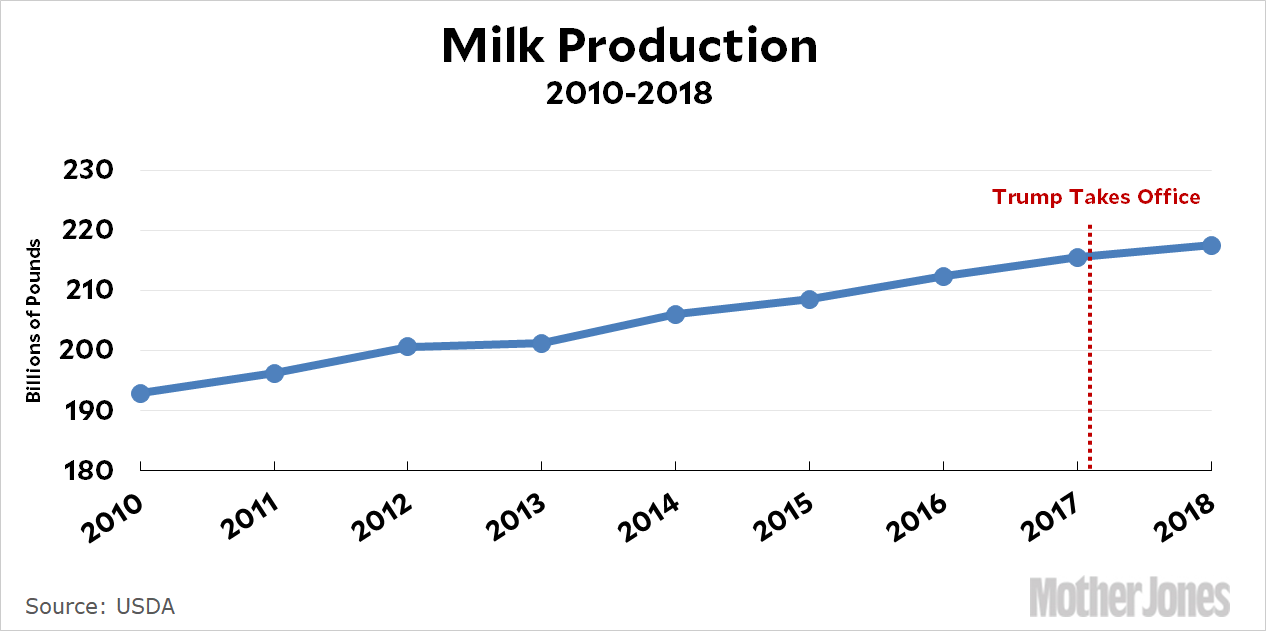
Here’s the price of milk:
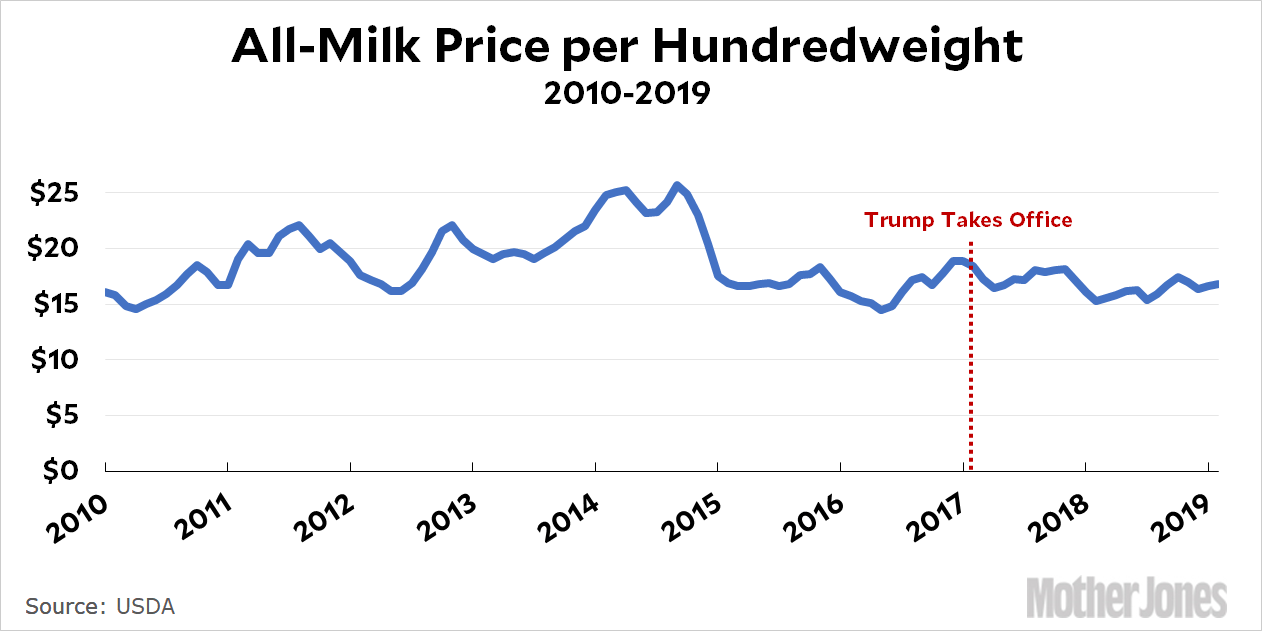
And here are exports of dairy products:
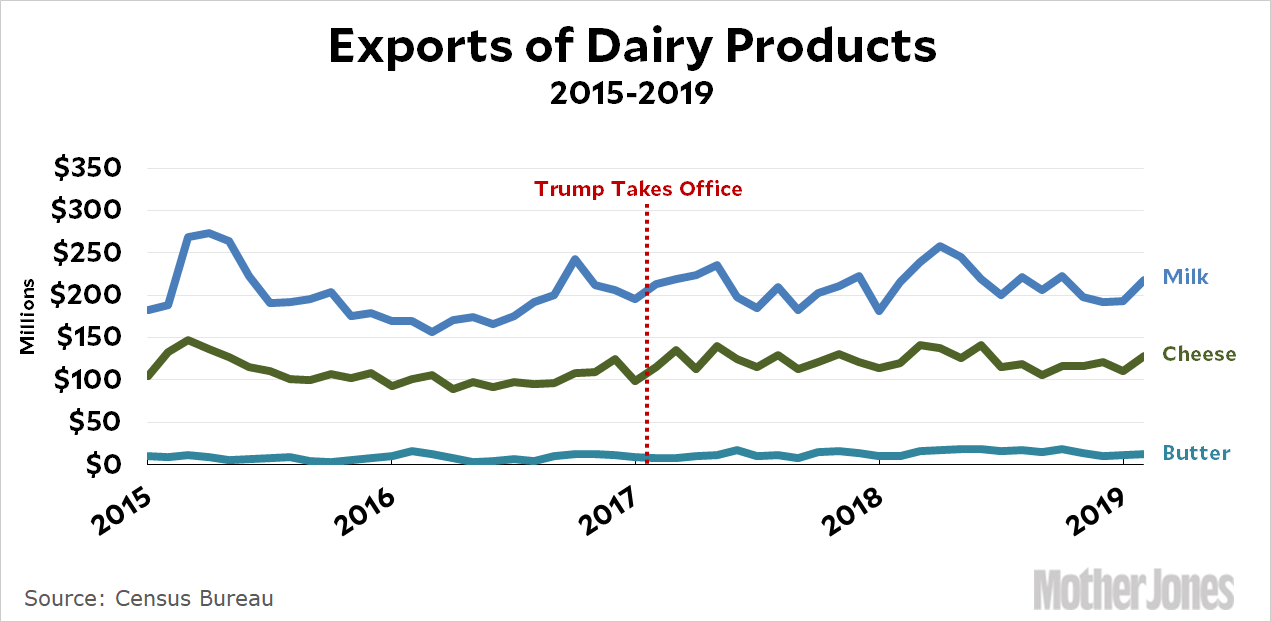
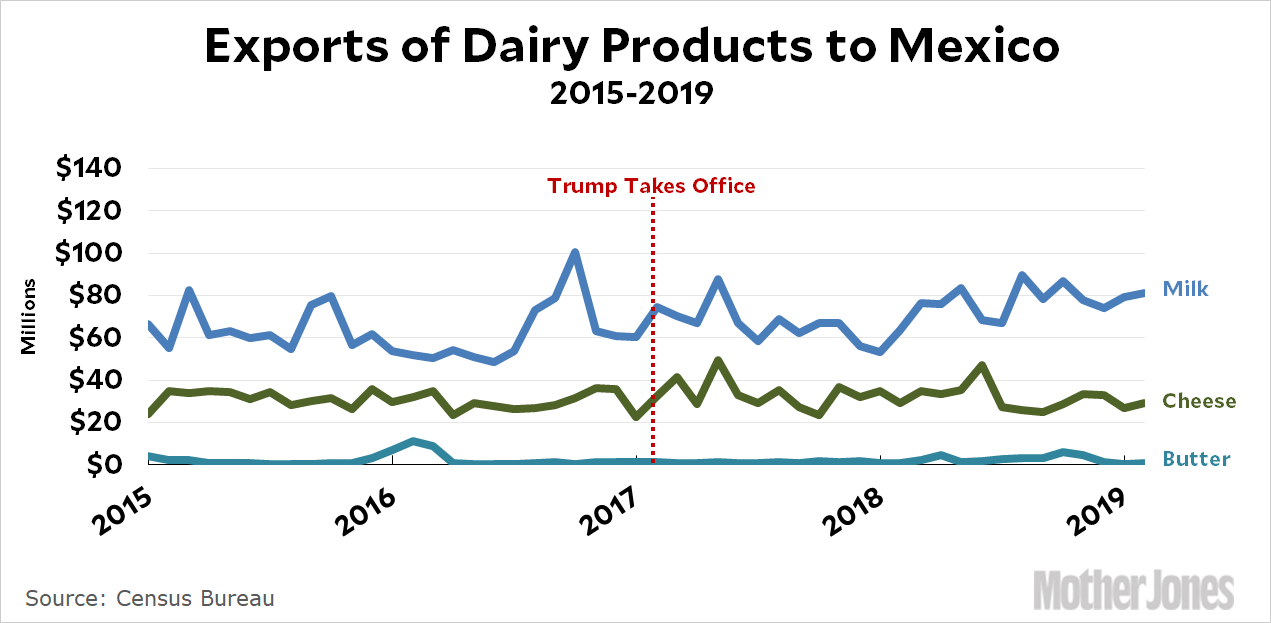
It’s true that milk prices have fallen 40 percent “over the past five years,” but that’s seriously misleading. There was something of a milk bubble from 2012-2014, which burst suddenly in the second half of 2014. The price of milk fell 40 percent in the second half of 2014—five years ago—but has been flat ever since.
Both total exports and exports to Mexico have been flat too for the past few years. In particular, neither production, nor price, nor export trends have changed even slightly during Donald Trump’s presidency. There may well be industry-wide trends that have reduced the cost of milk production, but my guess is that Wisconsin’s real problem isn’t Trump’s tariffs. It’s California:
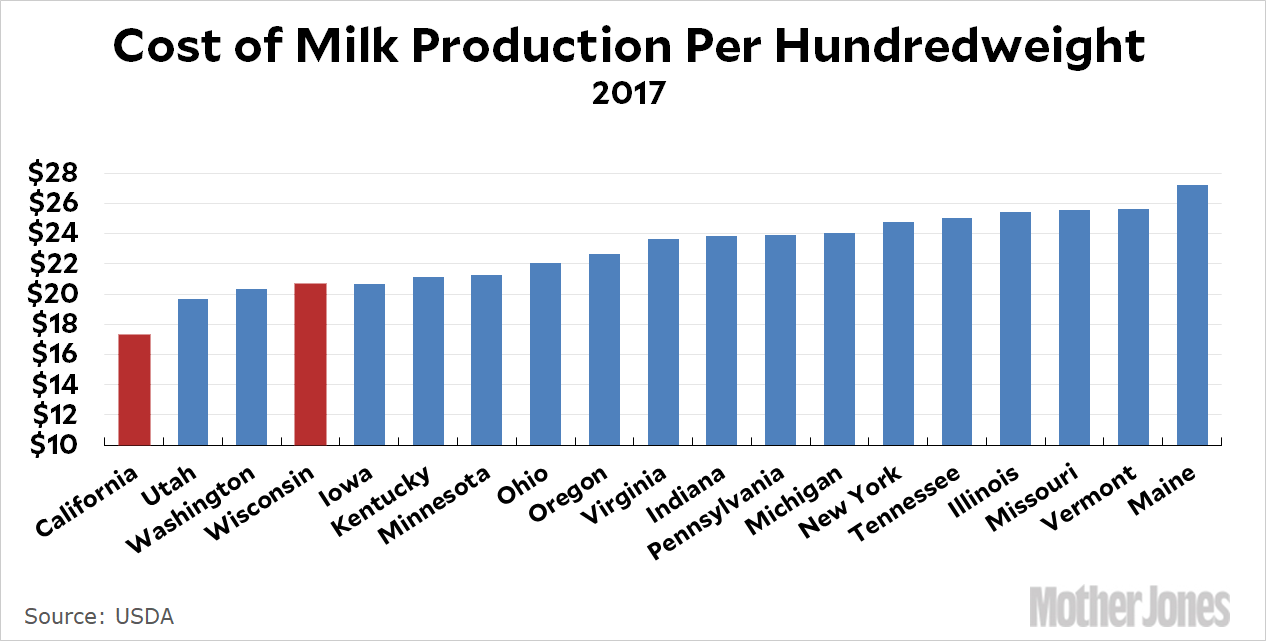
California is the low-cost producer of milk in the United States, and it’s driving everyone else out of business. But I guess that’s not a very sexy story.

















